
Spectroscopy is the field of study that measures and interprets the electromagnetic spectra that result from the interaction between electromagnetic radiation and matter as a function of the wavelength or frequency of the radiation. In simpler terms, spectroscopy is the precise study of color as generalized from visible light to all bands of the electromagnetic spectrum.
Optica is a professional society of individuals and companies with an interest in optics and photonics. It publishes journals and organizes conferences and exhibitions. It currently has about 488,000 customers in 183 countries, including nearly 300 companies.
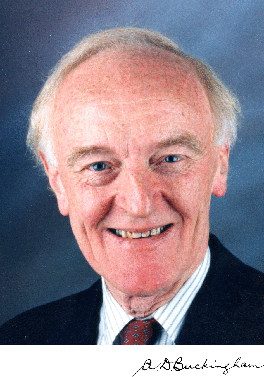
Amyand David Buckingham born in Pymble, Sydney, New South Wales, Australia was a chemist, with primary expertise in chemical physics.
Xi-Cheng Zhang is a Chinese-born American physicist, currently serving as the Parker Givens Chair of Optics at the University of Rochester, and the director of the Institute of Optics. He is also the Chairman of the Board and President of Zomega Terahertz Corporation.
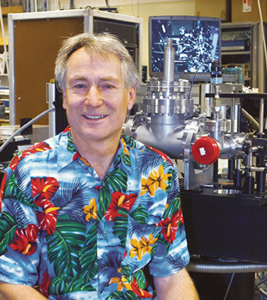
Richard James Saykally is an American chemist. He is currently the Class of 1932 Endowed Professor of Chemistry at the University of California, Berkeley. He has received numerous awards for his research on the molecular characteristics of water and aqueous solutions.

Francisco Javier "Frank" Duarte is a laser physicist and author/editor of several books on tunable lasers.
Richard C. Lord (1910–1989) was an American chemist best known for his work in the field of spectroscopy.
Richard C. Powell is an American professor emeritus of physics and vice president emeritus of the University of Arizona (UA), whose career focused on research in materials science and laser optics. He served as president of the Optical Society of America in 2000.
Michael S. Feld was an American physicist, who was best known for his work on quantum optics, and medical applications of lasers.
Peter Hannaford is an Australian academic and university professor. He is the Director of the Centre for Atom Optics and Ultrafast Spectroscopy at Swinburne University of Technology in Melbourne, and winner of the Walter Boas Medal in 1985.
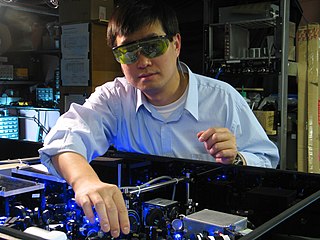
Jun Ye is a Chinese-American physicist at JILA, National Institute of Standards and Technology, and the University of Colorado Boulder, working primarily in the field of atomic, molecular and optical physics.
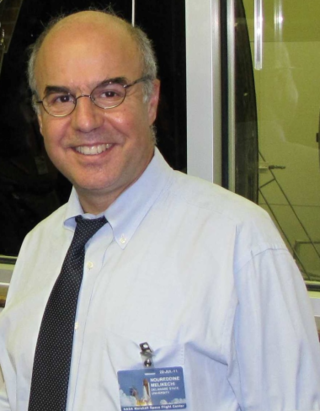
Noureddine Melikechi is an Algerian atomic, molecular, and optical physicist, educator and inventor. He is the author of more than 125 peer-reviewed publications, three book chapters and 15 patents. Melikechi is a member of the Mars Science Laboratory, NASA’s largest Mars exploration effort to date.
Shaul Mukamel is a chemist and physicist, currently serving as a Distinguished Professor at the University of California, Irvine. He is known for his works in Non linear Optics and Spectroscopy.
Siva Umapathy is a Professor of the Department of Inorganic and Physical Chemistry and also in the department of Instrumentation and Applied Physics at the Indian Institute of Science and was the Director of the Indian Institute of Science Education and Research (IISER) Bhopal. He is known for his studies of molecular dynamics using Raman spectroscopy and is a fellow of the Royal Society of Chemistry and an elected fellow of the Indian Academy of Sciences and also The National Academy of Science of India, The Council of Scientific and Industrial Research, the apex agency of the Government of India for scientific research, awarded him the Shanti Swarup Bhatnagar Prize for Science and Technology, one of the highest Indian science awards, in 2004, for his contributions to chemical sciences.

Albert Stolow is a Canadian physicist. He is the Canada Research Chair in Molecular Photonics, full professor of chemistry & biomolecular sciences and of physics, and a member of the Ottawa Institute for Systems Biology at the University of Ottawa. He is the founder and an ongoing member of the Molecular Photonics Group at the National Research Council of Canada. He is adjunct professor of Chemistry and of Physics at Queen's University in Kingston, and a Graduate Faculty Scholar in the department of physics, University of Central Florida and a Fellow of the Max-Planck-uOttawa Centre for Extreme and Quantum Photonics. In 2008, he was elected a Fellow in the American Physical Society, nominated by its Division of Chemical Physics in 2008, for contributions to ultrafast laser science as applied to molecular physics, including time-resolved studies of non-adiabatic dynamics in excited molecules, non-perturbative quantum control of molecular dynamics, and dynamics of polyatomic molecules in strong laser fields. In 2008, Stolow won the Keith Laidler Award of the Canadian Society for Chemistry, for a distinguished contribution to the field of physical chemistry, recognizing early career achievement. In 2009, he was elected a Fellow of the Optical Society of America for the application of ultrafast optical techniques to molecular dynamics and control, in particular, studies of molecules in strong laser fields and the development of new methods of optical quantum control. In 2013, he was awarded the Queen Elizabeth II Diamond Jubilee Medal (Canada). In 2017, Stolow was awarded the Earle K. Plyler Prize for Molecular Spectroscopy and Dynamics of the American Physical Society for the development of methods for probing and controlling ultrafast dynamics in polyatomic molecules, including time-resolved photoelectron spectroscopy and imaging, strong field molecular ionization, and dynamic Stark quantum control. In 2018, Stolow was awarded the John C. Polanyi Award of the Canadian Society for Chemistry “for excellence by a scientist carrying out research in Canada in physical, theoretical or computational chemistry or chemical physics”. In 2020, he became Chair of the Division of Chemical Physics of the American Physical Society. His group's research interests include ultrafast molecular dynamics and quantum control, time-resolved photoelectron spectroscopy and imaging, strong field & attosecond physics of polyatomic molecules, and coherent non-linear optical microscopy of live cells/tissues, materials and geological samples. In 2020, Stolow launched a major new high power ultrafast laser facility at the University of Ottawa producing high energy, phase-controlled few-cycle pulses of 2 micron wavelength at 10 kHz repetition rate. These are used for High Harmonic Generation to produce bright ultrafast Soft X-ray pulses for a new Ultrafast Xray Science Laboratory.

R. J. Dwayne Miller is a Canadian chemist and a professor at the University of Toronto. His focus is in physical chemistry and biophysics. He is most widely known for his work in ultrafast laser science, time-resolved spectroscopy, and the development of new femtosecond electron sources. His research has enabled real-time observation of atomic motions in materials during chemical processes and has shed light on the structure-function correlation that underlies biology.
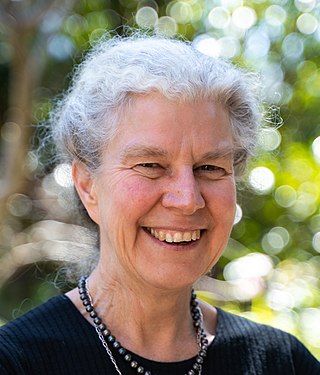
Alison Rodger FRSC FRACI FAA CChem is a professor of chemistry at Macquarie University. Her research considers biomacromolecular structures and their characterisation. She is currently developing Raman Linear Difference Spectroscopy and fluorescence detected liner dichroism to understand biomacromolecular structure and interactions with application to the division of bacterial cells.
Judith M. Dawes is an Australian physicist who is Professor of Physics at Macquarie University. She studies the interactions of light at the nanoscale and the applications of lasers in sensing. She is a former president of the Australian Optical Society, and a Fellow of SPIE and Optica.

Debabrata Goswami FInstP FRSC, is an Indian chemist and the Prof. S. Sampath Chair Professor of Chemistry, at the Indian Institute of Technology Kanpur. He is also a professor of The Department of Chemistry and The Center for Lasers & Photonics at the same Institute. Goswami is an associate editor of the open-access journal Science Advances. He is also an Academic Editor for PLOS One and PeerJ Chemistry. He has contributed to the theory of Quantum Computing as well as nonlinear optical spectroscopy. His work is documented in more than 200 research publications. He is an elected Fellow of the Royal Society of Chemistry, Fellow of the Institute of Physics, the SPIE, and The Optical Society. He is also a Senior Member of the IEEE, has been awarded a Swarnajayanti Fellowship for Chemical Sciences, and has held a Wellcome Trust Senior Research Fellowship. He is the third Indian to be awarded the International Commission for Optics Galileo Galilei Medal for excellence in optics.
Nathalie Picqué is a French physicist working at the Max Planck Institute of Quantum Optics in the field Frequency Combs, where she studies ultra-high resolution spectroscopy using ultrashort pulses of light combined with Fourier-transform spectroscopy to reveal the fine chemistry of samples, in particular in the mid-infrared, demonstrating resolving power in excess of 1,000,000,000,000.









